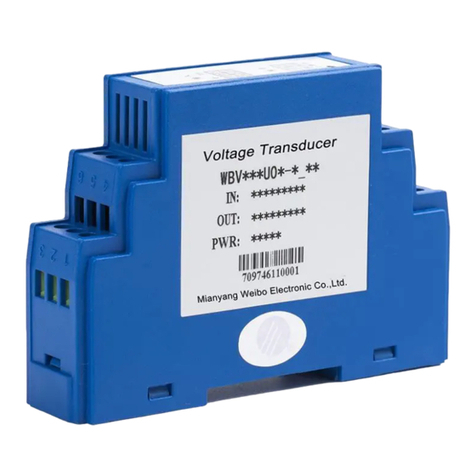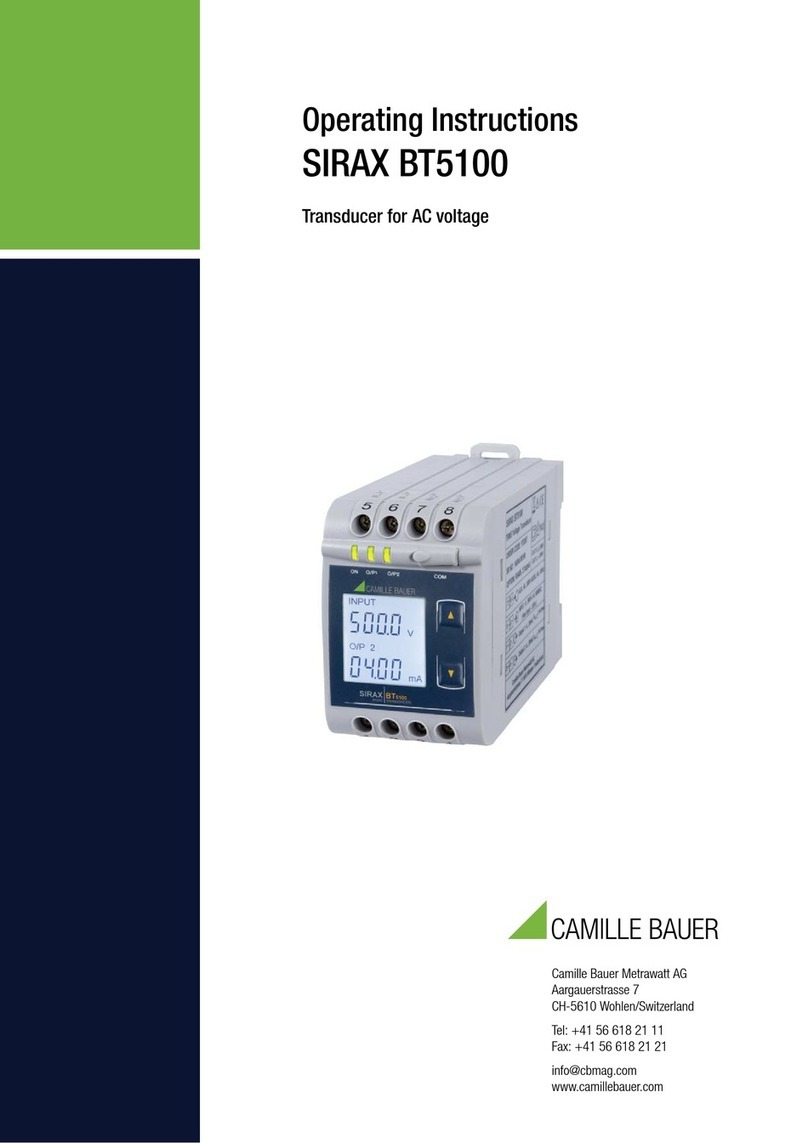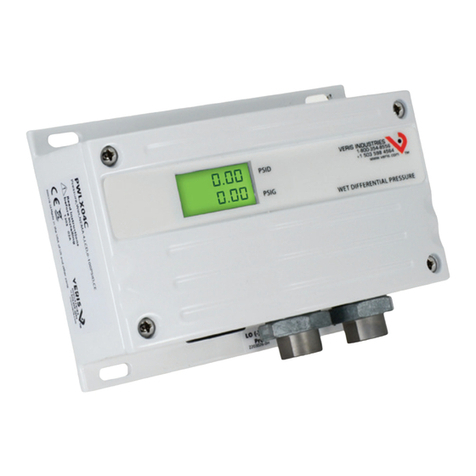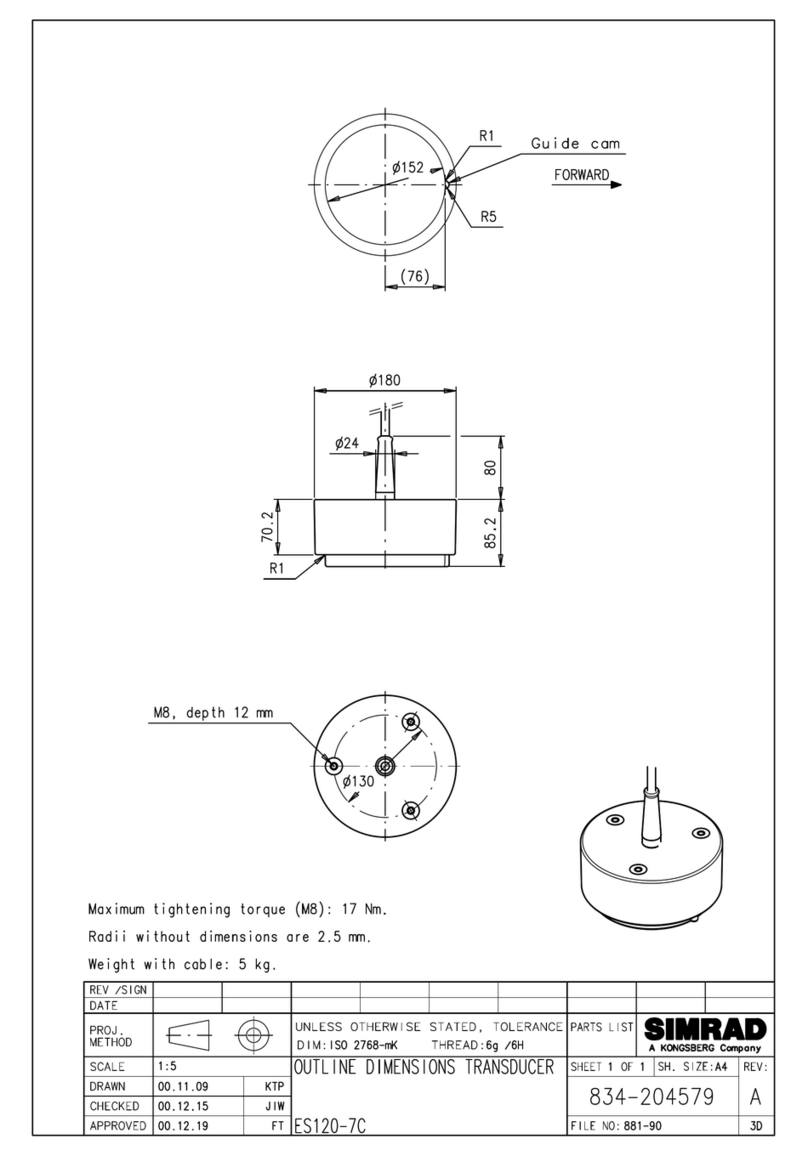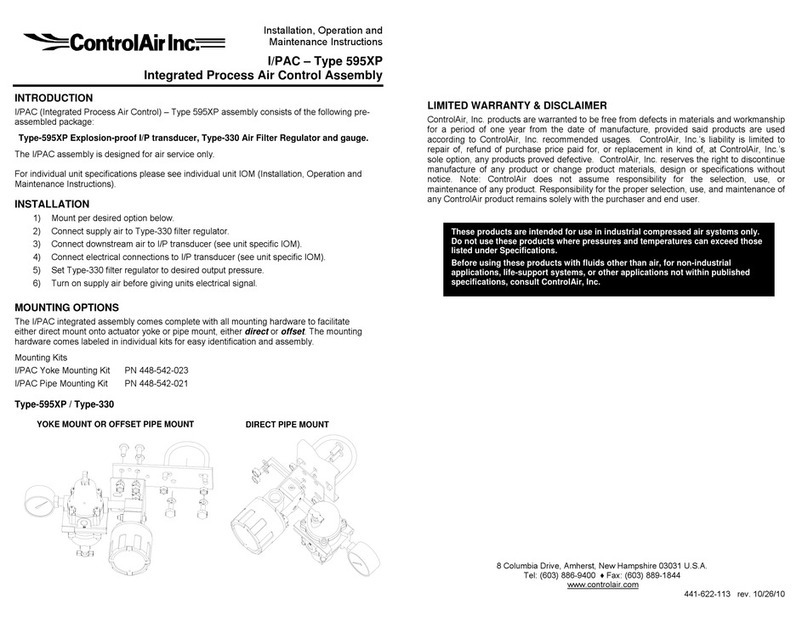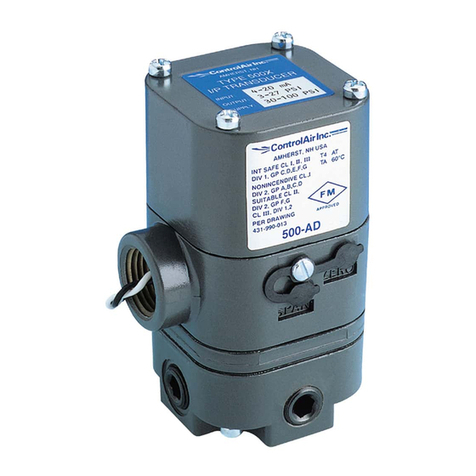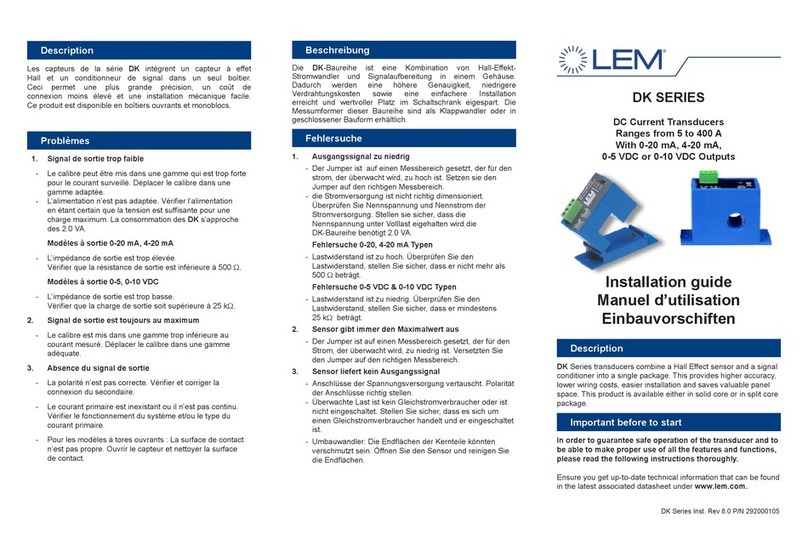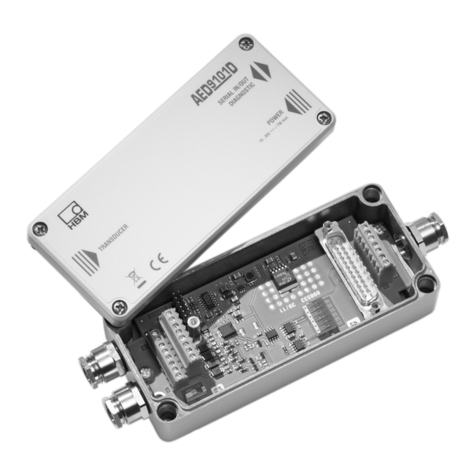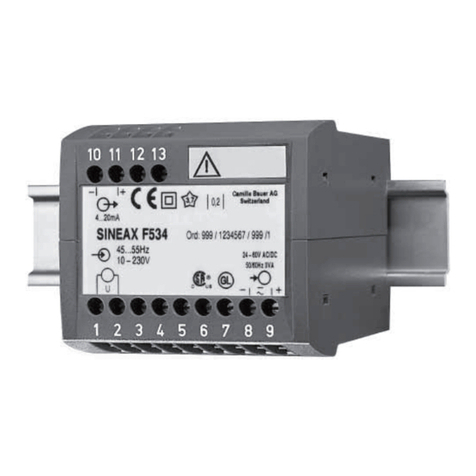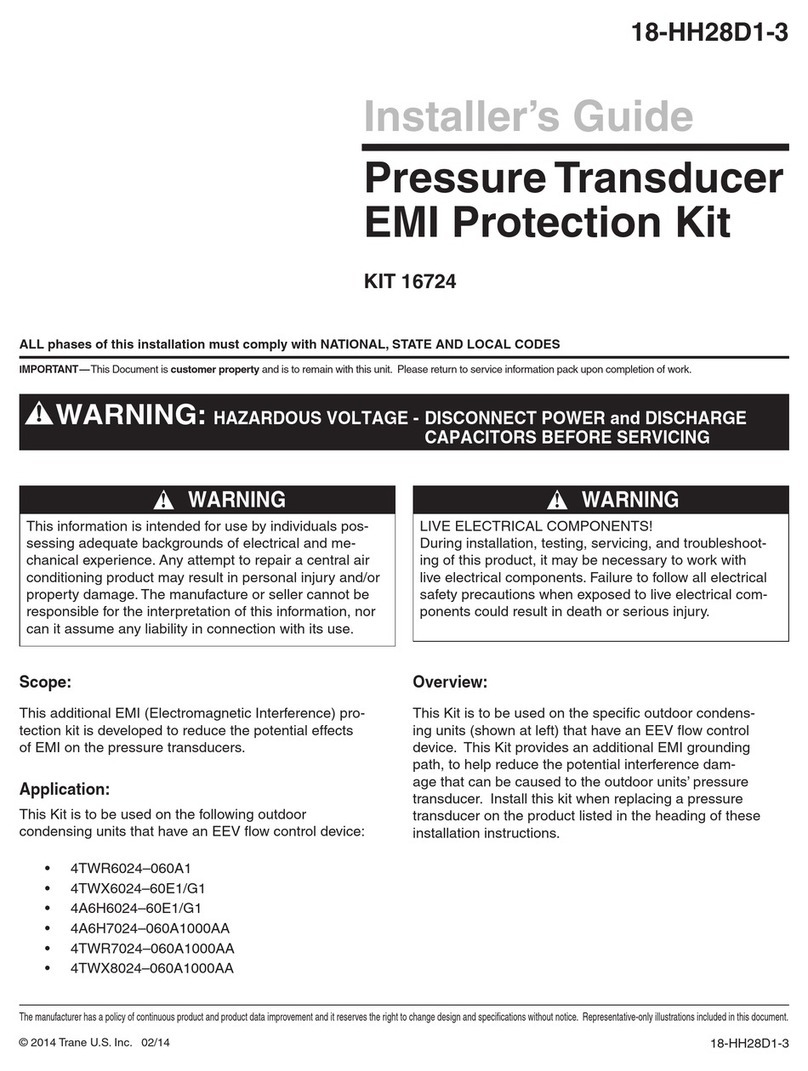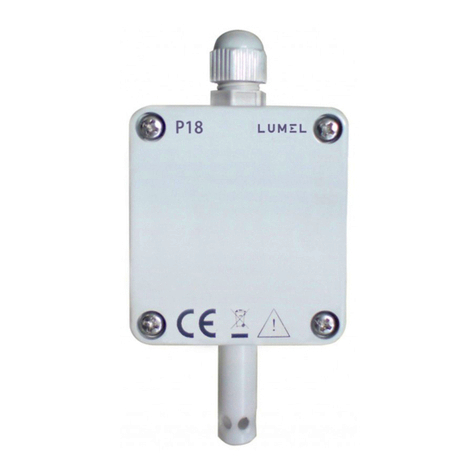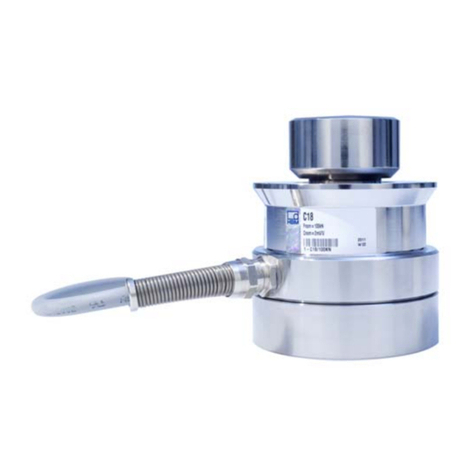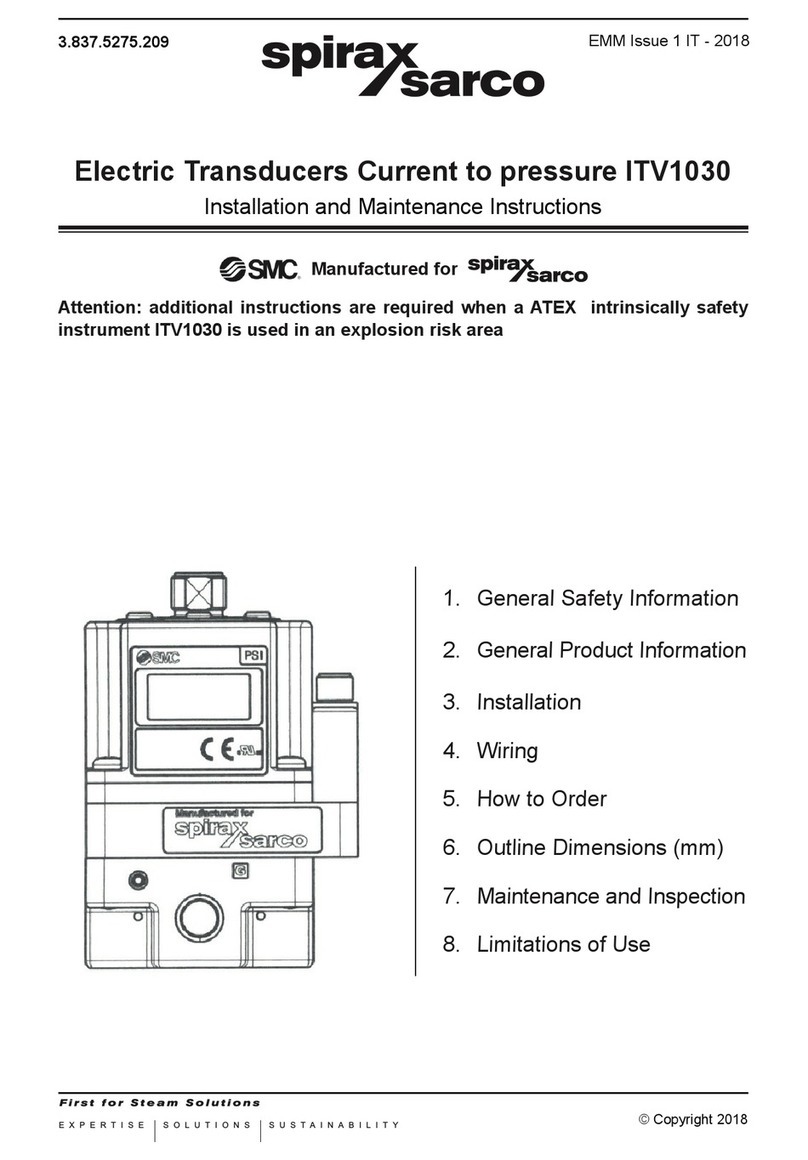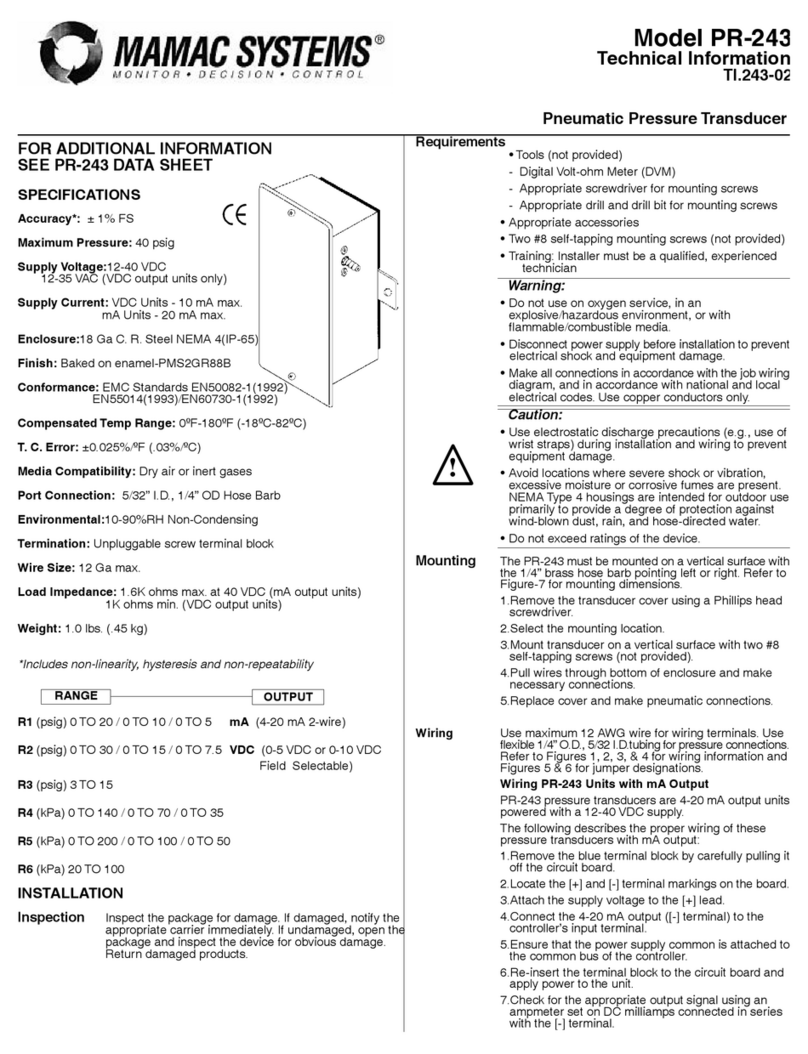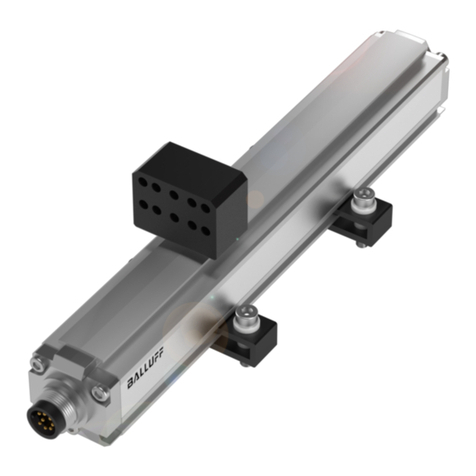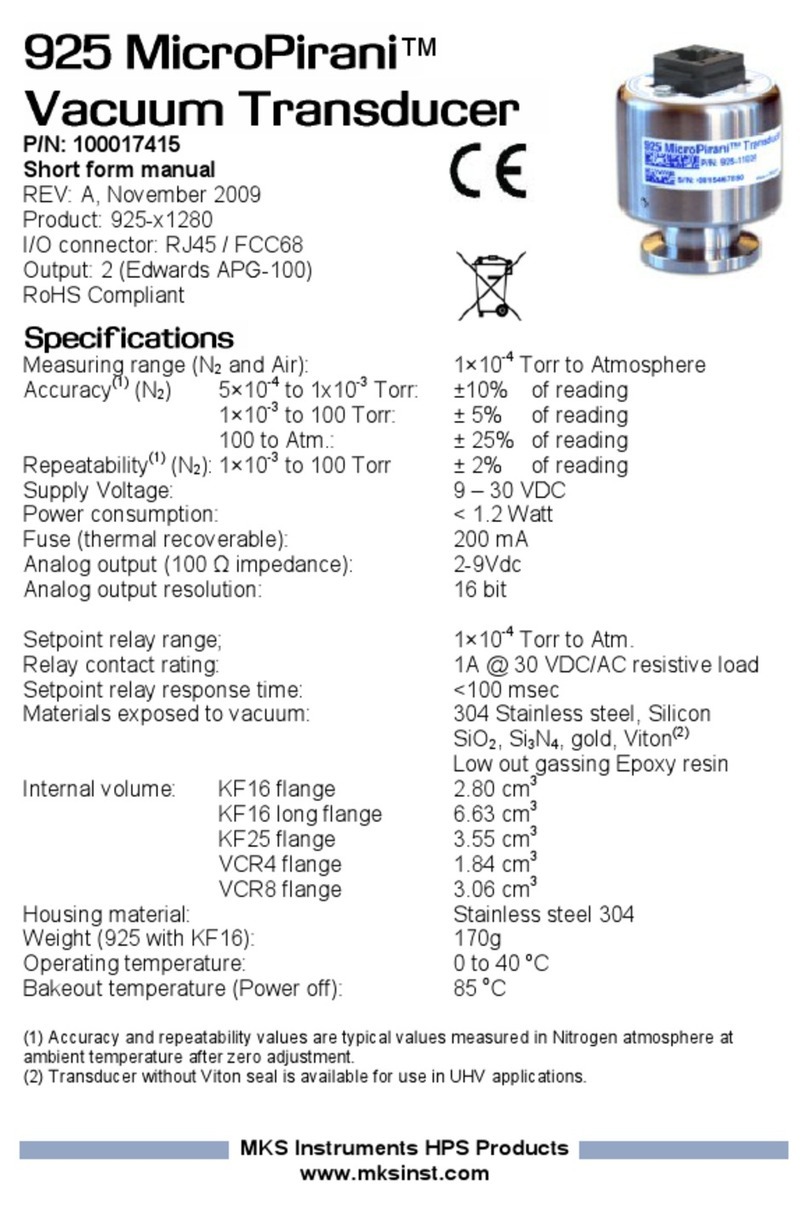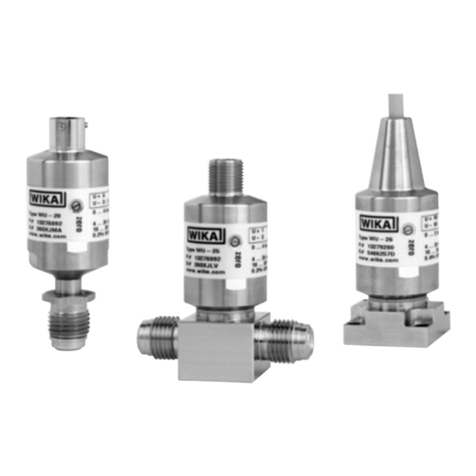
441-622-015 Type 500X Page 3
Port Sizes
1/4” NPT (Pneumatic)
1/2” NPT (Electric) 1/4” NPT (Pneumatic)
1/2” NPT (Electric)
Clean, dry, oil-free, instrument air, filtered to 40 micron
Electrical Connections
Conduit 1/2” NPT (standard); DIN 43650 (optional)
Pipe, panel, or bracket
2.1 lbs. (0.94 kg) 2.1 lbs. (0.94 kg)
2.1 Description
2.1.1 The ControlAir Type 500X converts a current or voltage input signal to a linearly proportional
pneumatic output
pressure. This versatile instrument is designed for control applications that
require a high degree of reliability and repeatability at an economical cost.
2.2 Principle of Operation
2.2.1 The Type 500X is a force balance device in which a coil is suspended in the field of a magnet by a
flexure. Current flowing through the coil generates axial movement of the coil and flexure. The
flexure moves towards the nozzle
and creates back pressure which acts as a pilot pressure to an
integral booster relay. Input signal increases (or
decreases for reverse acting) cause proportional
output pressure increases.
Zero and Span are calibrated by turning adjust screws on the front face of the unit. Adjustment of
the zero screw repositions the nozzle relative to the flexure. The span adjustment is a
potentiometer that controls the amount of
current through the coil.
2.3 Mounting
2.3.1 Unit may be pipe, panel, or bracket mounted. Mounting may be at any angle, though may require field
adjustment. High external vibration may cause output fluctuations. Mounting in a vibration-free area is
recommended.
2.4 PneumaticConnections
2.4.1 The 1/4 NPT (1/4 BSP option) supply and output ports are marked “IN” and “OUT” respectively on
the base of the unit. Clean all
pipe lines to remove contamination before installation. Apply pipe
compound to male threads of the air line only. Avoid getting compound in the air lines.
Clean dry instrument quality air must be used. To ensure optimum performance supply pressure
should be regulated. To provide stable inlet pressure and prevent contamination of the internal
section of the transducer the use of an Instrument Air Filter Regulator is recommended.
The two unmarked ports on the base of the unit are gage ports but may be used as alternative
output ports. Any
unused ports must be plugged.
WARNING
The I/P transducer enclosure contains aluminum and is considered to constitute a potential risk of
ignition by impact or friction and must be considered during installation.
2.5 Electrical Connections
2.5.1 Electrical connections are made to the black and white leads extending out from the 1/2 NPT conduit
fitting. When the side of the input signal is connected to the black lead, the output pressure will
increase as the t signal increases.
Figure 1 DIN 43650 Connector (“D” option)
2. DESCRIPTION AND INSTALLATION
